Study on syndrome distribution and medication characteristics of patients with rectal cancer in the real world
GAO Feng, GUO Li-jun, XIE Yan-ming, LIU Huan✉, ZHANG Yin, LU Qi, ZHUANG Yan
1. Institute of Basic Research in Clinical Medicine, China Academy of Chinese Medical Sciences, Beijing 100700, China
2. Xiyuan Hospital,China Academy of Chinese Medical Sciences, Beijing 100091, China
2. School of Statistics,Renmin University of China, Beijing 100872,China
4. Navy General Hospital of the People's Liberation Army of China, Beijing 100048,China
Keywords:
ABSTRACT Objective: To explore the general characteristics, traditional Chinese medicine (TCM)syndromes and medication of patients with rectal cancer in China. Methods: The clinical data of inpatients with rectal cancer from the information system of 17 tertiary A-level traditional Chinese medicine hospitals in China were collected. After data standardization, descriptive analysis was performed on the general information, syndrome distribution and medication characteristics of the included patients, and association rule analysis was performed on the drug usage. Results: A total of 15 424 hospitalized patients with rectal cancer were included. The ratio of male to female patients was 1.6:1, the average age was 60.87 years old, and the age was mainly in the range of 50 to 79 years old. Among the 12 146 patients with rectal cancer, the top 5 TCM syndromes were Qi and Yin deficiency syndrome (25%), phlegm and blood stasis syndrome (19%), spleen deficiency syndrome (14%), Qi stagnation and blood stasis syndrome(7%) and Qi and blood deficiency syndrome (6%). After excluding the anti-tumor western medicine recommended by the guidelines, adrenal corticosteroids (43.55%), antibiotics(42.94%) and immunomodulatory drugs (42.66%) ranked the top three in the frequency of western medicine use. Dexamethasone (38.15%), metoclopramide tablets (20.51%) and furosemide injection (19.71%) were the three most commonly used western medicines.Among the three western medicines combined, cimetidine, granisetron hydrochloride dextrose injection + dexamethasone were the most common (support 8.23%, confidence 96.4%, and improvement 2.48%). Heat-clearing and detoxifying agents (53.72%), Yiqi-fuzheng agents(49.76%) and blood-activating and stasis-removing agents (15.68%) ranked the top 3 in the frequency of use of traditional Chinese medicine.Shenqi Fuzheng injection, Shenqi Fuzheng injection (21.59%), Compound Kushen injection (17.52%) and Aidi injection (11.96%) were the three most commonly used Chinese patent medicines. Conclusion: The main syndromes of patients with rectal cancer may be Qi and Yin deficiency syndrome, phlegm and blood stasis syndrome, and spleen deficiency syndrome, etc. The treatment needs to focus on the supplementation of vital essence, combination of dredging and tonifying method, and the integration of traditional Chinese and western medicine.
1. Introduction
Rectal cancer is a common clinical malignant tumor of the digestive tract. It is mostly asymptomatic in the early stage, and gradually develops symptoms such as defecation habits, changes in stool characteristics, weight loss, fatigue and other symptoms.According to the Global Cancer Statistical Report (GLOBOCAN 2020) released by the World Health Organization, there are more than 700,000 new cases of rectal cancer diagnosed worldwide,and the number of deaths accounts for 3.4% of the total number of cancer deaths. The disease burden is increasingly significant[1]. At present, there are few real-world TCM data on rectal cancer, but a comprehensive understanding of the general characteristics, TCM syndromes and drug use of rectal cancer patients in my country can provide a reference for the prevention and treatment of rectal cancer with integrated traditional Chinese and Western medicine.The data of this study comes from the large-scale inpatient electronic medical record (EMR) data warehouse created by the Institute of Clinical Basic Medicine of Chinese Academy of Chinese Medical Sciences[2].By extracting the information of rectal cancer inpatients,the current trend of diagnosis and treatment of rectal cancer patients is analyzed, which lays a foundation and provides inspiration for further accumulation of real-world evidence in the future[3].
2. Materials and methods
2.1 Data Sources
In this study, the large inpatient EMR data warehouse derived from HIS (hospital information system, HIS) was used to extract the general information, general information of patients with the first diagnosis of "rectal cancer" from the inpatient medical records in HIS of 17 large tertiary TCM hospitals nationwide, TCM syndrome types and drug orders. The admission time of the patients in the included EMR was from December 2004 to May 2018, and the data analysis mainly revolved around the extracted relevant information.This study has been successfully approved by the Ethics Committee of the Institute of Clinical Basic Medicine of Chinese Academy of Chinese Medical Sciences (2011-11).
2.2 Data Extraction
2.2.1 Inclusion criteria
The diagnosis of "rectal cancer" was made by histopathological examination; the first diagnosis at discharge was "rectal cancer".
2.2.2 Exclusion criteria
Does not meet the diagnostic criteria of Western medicine;the patient's age is greater than or equal to 100 years old; the length of hospitalization is greater than or equal to 365 days; the hospitalization fee is less than or equal to 1,000 yuan.
2.3 Database structure normalization
After extracting EMR data from HIS systems of different hospitals,a sequential unique ID was set for each included patient as the correlation index between the data. The database format is set as a data module covering general information of rectal cancer patients(such as name, gender and age, etc.), TCM syndrome types and doctor's order medication.
2.4 Data normalization
Different hospitals use different standards and expressions for the same project, so data standardization needs to be completed before data analysis. According to the "National Higher Chinese Medicine College Planning Textbook (9th Edition): Traditional Chinese Medicine Diagnostics", the TCM syndrome types in the diagnosis are standardized; the names, efficacy and pharmacological action classification of Chinese and Western medicines refer to the 2020 edition of the "Chinese Pharmacopoeia" and drug inserts Standardize by combining different dosage forms of the same drug.
2.5 data analysis
The method of frequency statistics was used, and SAS 9.3 software was used to descriptively analyze the general information of patients,TCM syndrome types, and doctor's prescribed medication, and Excel 2021 was used for auxiliary mapping. Using SPSS Clementine 12.0 data mining software, with support as the main parameter, using Apriori algorithm[4]. The characteristics of the combined use of Chinese medicine and western medicine in patients were analyzed by association rules, and a network diagram was drawn to display the results.
3. Results
3.1. Basic information for patients with rectal cancer
3.1.1 Gender distribution
A total of 15,424 patients with rectal cancer were included.There were 9208 male patients (59.70%) and 5770 female patients(37.41%). The male-to-female ratio was 1.6:1, and the proportion of male patients was higher than that of females.
3.1.2 Age distribution
The mean age of rectal cancer patients with age records was(60.87±14.12) years. The patients were analyzed by age and found that there were 1163 patients with rectal cancer under the age of 40,accounting for 7.54% of the total number of patients. There were 11,152 rectal cancer patients aged 50-79, accounting for 72.30% of the total number of patients. Please refer to Table 1 for specific age groups.
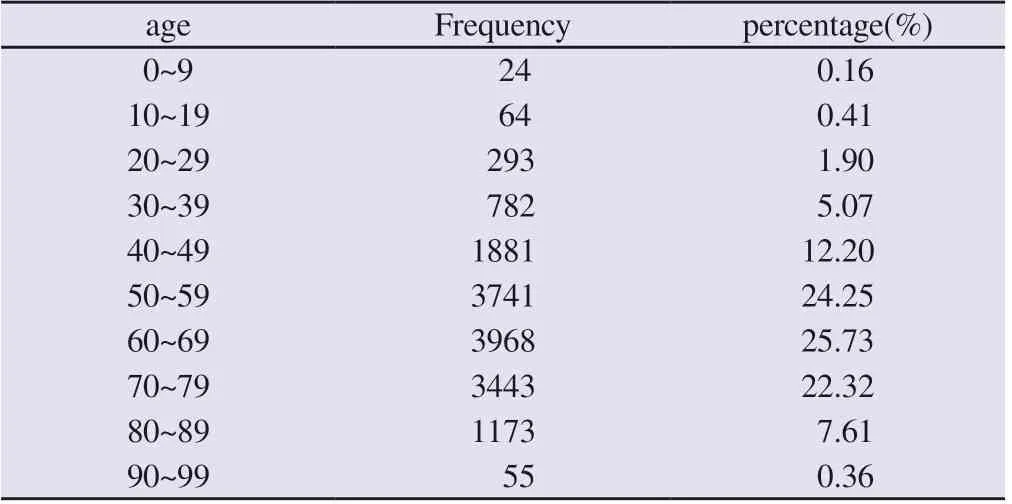
Tab 1 Age distribution of patients with rectal cancer
3.2 Characteristics of TCM syndromes of rectal cancer
There were 12 146 rectal cancer patients with TCM syndrome records. Among them, there were 7321 cases of deficiency syndrome, accounting for 53.65%; 4825 cases of positive patients,accounting for 46.35%. The main TCM syndrome types of the patients were Qi and Yin deficiency (25%), phlegm and blood stasis(19%), spleen deficiency (14%), Qi stagnation and blood stasis (7%),and Qi and blood deficiency (6%). ), etc. Figure 1 for details.
3.3 Characteristics of medication in patients with rectal cancer
3.3.1 Commonly used drug distribution
A total of 15,111 patients with rectal cancer were taking medication, involving 513 kinds of western medicines and 102 kinds of proprietary Chinese medicines. The pharmacological effects of western medicines, the efficacy categories of Chinese patent medicines, and specific drugs commonly used in rectal cancer patients were statistically analyzed according to the frequency. The top 10 results are shown in Table 2 and Table 3.

Fig 1 Distribution of traditional Chinese medicine syndromes in 12 146 cases of rectal cancer
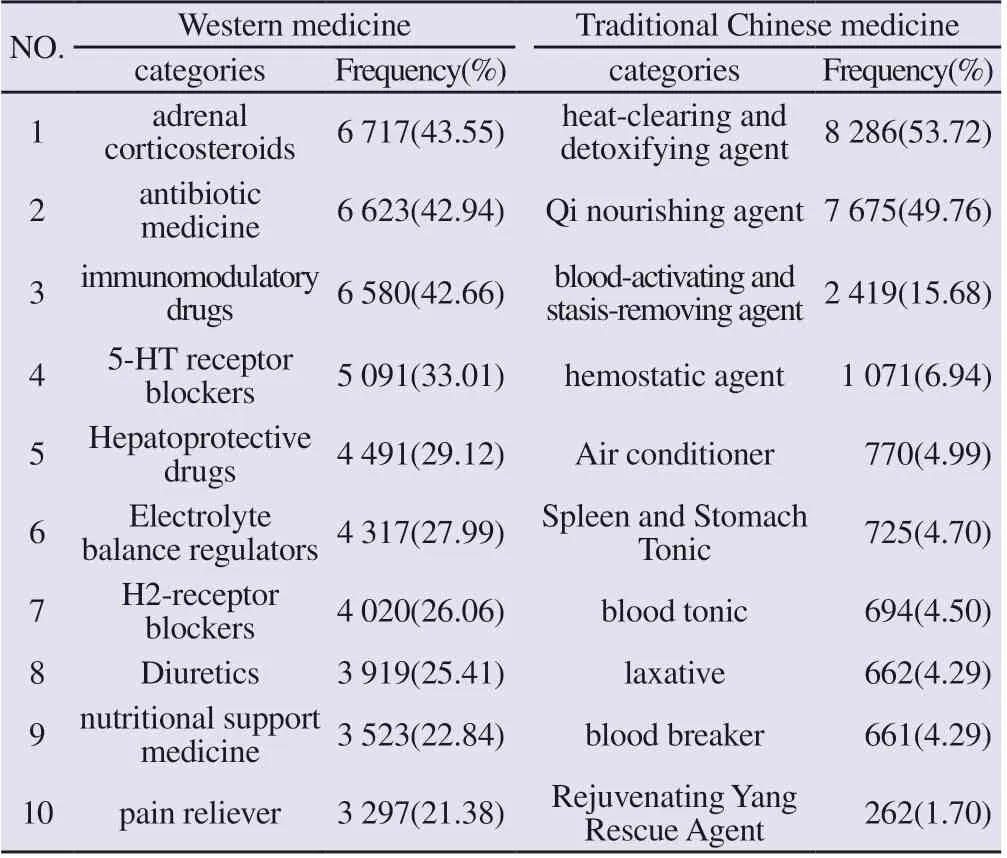
Tab 2 The top 10 categories commonly used traditional Chinese medicine and Western medicine in patients with rectal cancer
3.3.2 Analysis of Association Rules for Combination Drugs
The association rule analysis of drug use can quantitatively display the combined use characteristics of drugs. The treatment of rectal cancer needs to strictly follow the diagnosis and treatment standards, so the anti-tumor drugs determined by the guidelines are not included in the study, so as to more clearly demonstrate the drug use rules that are not specified in the guidelines. According to the Apriori algorithm, the association rule analysis was carried out on the characteristics of the combination of various western medicines. The results are shown in Table 4. At the same time,according to the algorithm, the association rule analysis was carried out on the characteristics of a variety of Chinese patent medicines in combination, and the results are shown in Table 5.
3.3.3 Network Analysis of Traditional Chinese Medicine Combination Drugs

Tab 3 The top 10 commonly used western medicine and traditional Chinese medicine in patients with rectal cancer
The network diagram can visualize the relationship between different drugs and pharmacological action classifications, and can clearly show the relationship between nodes. In this study, network graphs were drawn and analyzed for the top 10 commonly used Chinese patent medicines and their efficacy classifications used by patients with rectal cancer. The results are shown in Figures 2 and 3.

Tab 5 Characteristics of combined drugs of various traditional Chinese medicines
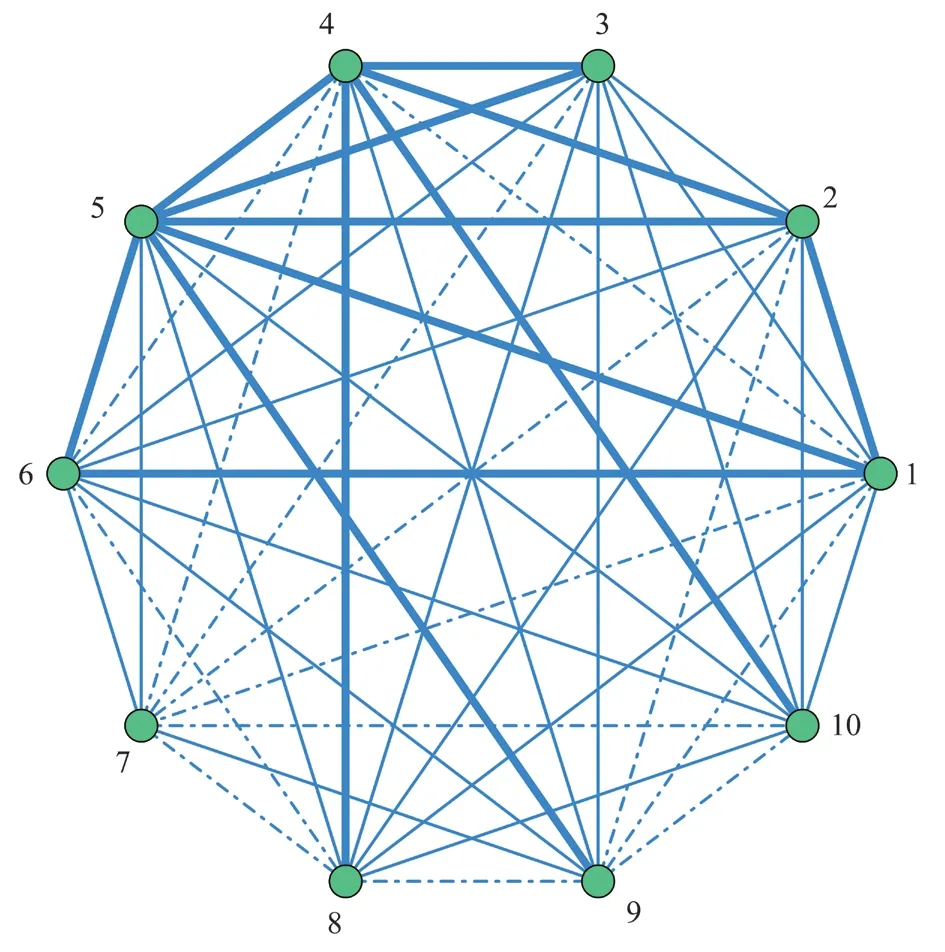
Fig 2 Network analysis on the combined use of commonly used traditional Chinese medicine
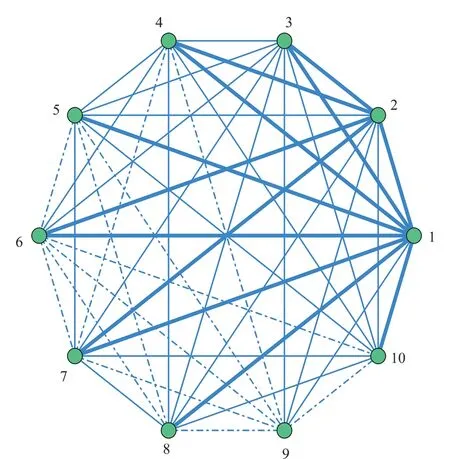
Fig 3 Pharmacological association network analysis of commonly used traditional Chinese medicine
4. Discussion
4.1 Epidemiology of Rectal Cancer and Current Situation of Western Medicine Treatment
Research shows that the burden of disability-adjusted life years associated with rectal cancer disease has been increasing worldwide over the past decades and is expected to continue to increase in my country[5]. In recent years, the CorCCRES survey conducted by the National Cancer Center showed that 57.6% of 8465 colorectal cancer patients were rectal cancer patients[6]. More than half of the patients were male, with a male-to-female ratio of 1.34:1. The average age at first diagnosis was (59.3±12.8) years old. In addition,according to the latest cancer data in my country, there were 408,000 new cases of colorectal cancer in 2016, including 238,500 male and 169,500 female patients, with a male-to-female ratio of 1.40:1. The trend of normal distribution is mainly concentrated in the age range of 60 to 74 years old[7]. The results of this study show that rectal cancer is more common in male patients, and the age distribution of the main patients is in the range of 50 to 79 years old, which is roughly in line with the previously published domestic cancer statistics.Studies have shown that androgens promote intestinal stem cell proliferation and inhibit intestinal epithelial cell differentiation by negatively regulating bone morphogenetic protein signaling in stromal cells, which may explain the differences in the incidence of rectal cancer between different genders[8]. The burden of rectal cancer is influenced by many factors, including population aging,lifestyle, medical technology, access to treatment, physician-patient preference, and healthcare reform, among others[9]. In this context,reducing the burden of rectal cancer requires raising awareness of the disease through health education, avoiding exposure to risk factors,promoting early screening for high-risk groups, and improving medical services, thereby promoting national health.
The only radical cure for rectal cancer is early excision of the tumor, and the drug treatment plan needs to be selected rationally after the purpose of treatment is clearly defined[10]. After excluding the western anti-tumor drugs recommended by the guideline,the results of this study showed that the use frequency of adrenal corticosteroids, antibiotics and immunomodulatory drugs ranked the top three, dexamethasone, metoclopramide tablets and furosemide injections are the three most commonly used treatments[11]. Among the three western medicines combined, cimetidine, granisetron hydrochloride dextrose injection + dexamethasone were the most common (support 8.23%, confidenceb 96.4%, improvement 2.48%).Dexamethasone can reduce secondary inflammatory responses by interfering with the production of interleukin-1 and tumor necrosis factor-α, thereby reducing the side effects of tumor treatment,and dexamethasone can also increase some adjuvant drugs such as granisetron. efficacy and reduce the incidence of adverse reactions[12]. Among prokinetics, metoclopramide is a well-studied and guideline-recommended first-line dopamine receptor antagonist,acts as a central and peripheral antiemetic, and has gastric-emptying properties[13-15]. Furosemide is widely used in clinical treatment of various edema caused by cancer, with obvious effect and cheap and easy to obtain. Cimetidine and granisetron injections are further used in patients who are difficult to take oral drugs, which can better improve the gastrointestinal adverse reactions during the treatment of patients with rectal cancer.
The whole process of treatment of patients with rectal cancer should involve the best supportive treatment methods such as mental and psychological intervention, nutritional support and pain management. The treatment of early-stage rectal cancer (T1N0M0)is generally through direct resection of the lesion through endoscopy and surgery, and adjuvant therapy is not recommended[11].The principles of radical resection therapy include: rectal cancer (T2~4,N0~2, M0) stage, wide tumor resection to obtain histologically negative margins, and total mesorectal excision(TME) including transabdominal local Lymph node dissection, such as low anterior rectal resection or abdominoperineal combined rectal cancer resection[10]. Locally advanced unresectable rectal cancer or stage (T3~4 or N1~2) rectal cancer with the tumor less than 12cm from the anal verge requires neoadjuvant radiotherapy and chemotherapy [11]. CapeOx regimen, FOLFOX regimen or single agent such as capecitabine and 5-fluorouracil/leucovorin regimen are commonly used adjuvant chemotherapy regimens for rectal cancer (T1~4, N1~2, M0) stage recommended by guidelines[10].Chemotherapy (commonly used drugs 5-fluorouracil/leucovorin,oxaliplatin, irinotecan and capecitabine, etc.), targeted therapy(commonly used drugs cetuximab, bevacizumab and regorafenib,etc.) and immunotherapy (commonly used drugs pembrolizumab and nivolumab, etc.) are important ways to prolong the survival of patients with advanced rectal cancer, but the adverse effects of the drugs are obvious[16]. From the point of view of medicine and health economics, the rational combination of drugs to reduce the adverse reactions of antitumor drugs is worth further exploration.
4.2 Recognition and treatment of rectal cancer in traditional Chinese medicine
Although a variety of etiologies are involved, the formation of cancer is often due to deficiency of righteous qi, and then under the long-term influence of major pathological factors such as stagnation of qi, blood stasis, phlegm stagnation, accumulation of dampness and heat toxin, a visible mass is formed.Previous studies have reported that common TCM syndromes in patients with rectal cancer include stasis-toxin-internal resistance syndrome, spleen-kidneyyang deficiency syndrome, damp-heat accumulation syndrome, liverkidney yin-deficiency syndrome, qi-blood deficiency syndrome,etc[17]. The syndromes of patients with early rectal cancer are mainly phlegm and blood stasis syndrome, spleen deficiency syndrome and damp-heat accumulation syndrome[18].Through the analysis of syndrome types in different age groups, it is found that among the young and middle-aged patients, there are common evidences such as damp-heat accumulation syndrome, cold-dampness block syndrome, qi stagnation and blood stasis syndrome, spleen deficiency and damp stasis syndrome, and syndromes of deficiency and excess;Deficiency syndromes such as dampness and blood stasis syndrome,spleen spleen deficiency syndrome, and syndromes of mixed deficiency and excess[18-20].Another study showed that most of the patients with rectal cancer after surgery were mainly manifested as spleen deficiency syndrome[21]. Clinically, more than 80% of TCM compound syndrome types[18].The distribution of syndrome types in patients with rectal cancer found in this real-world study was roughly consistent with the distribution of syndrome types reported in related reports, and further supplemented the epidemiological data of rectal cancer syndrome types in traditional Chinese medicine.
In the case of strict syndrome differentiation and treatment, this study found that clearing heat and detoxifying, nourishing qi and strengthening the body, and promoting blood circulation and removing blood stasis are the most commonly used treatments for rectal cancer, which is similar to the results of related studies[22].Tumor patients often experience infection and inflammation due to the local invasion of tumors compressing organs and lumen in the body, as well as tissue necrosis caused by tumor itself often due to insufficient blood supply. At the same time, the metabolites of the tumor will stimulate the thermoregulatory center, causing cancerous fever[23].Reports in the literature show that, the representative drugs among the heat-clearing and detoxifying drugs, such as Hedyotis diffusa, Shanci Mushroom and Scutellaria barbata, play a role in killing tumor cells and reversing tumors by affecting the proliferation and apoptosis of tumor cells. multidrug resistance[24-26]. Because the tumor consumes the human body and interferes with the normal function, Zhengxu occupies an important position in the whole course of the disease. Qi and Fuzheng therapy can improve perioperative symptoms of rectal cancer patients, reduce the sequelae and complications caused by surgery, improve the body's recovery ability, and achieve the purpose of "righteousness overcomes evil,and evil goes away"[27]. The blood stasis syndrome is one of the important pathological basis of cancer and has an important impact on the prognosis of patients[28]. According to research reports,traditional Chinese medicines for promoting blood circulation and removing blood stasis, such as Panax notoginseng, Angelica sinensis,Chuanxiong, Corydalis, red peony, safflower and Jiangxiang, have been proved to have anti-cancer and tumor-suppressive effects in vitro and in vivo[23] .
Previous studies have suggested that traditional Chinese medicine treatment of patients with rectal cancer can reduce the recurrence rate of adenoma, improve symptoms, reduce the toxic and side effects of chemotherapy drugs, and enhance immunity[29-31]. This study found that Shenqi Fuzheng injection, Compound Kushen injection and Aidi injection were commonly used in the treatment of patients with rectal cancer. Some studies suggest that Shenqi Fuzheng Injection can increase the content of interleukin-12 and γ-interferon factor in adjuvant treatment of patients with rectal cancer, and has the effect of reducing toxicity and increasing efficacy of chemotherapy drugs[32]. Shenqi Fuzheng injection can increase the content of interleukin-12 and γ-interferon factor in adjuvant treatment of patients with rectal cancer, and has the effect of reducing toxicity and increasing efficacy of chemotherapy drugs.Compound Kushen injection has the pharmacological effects of antioxidation and liver protection, improving immunity and enhancing chemosensitivity, and it can reverse the multidrug resistance of rectal cancer[33]. Aidi injection can inhibit tumor angiogenesis and enhance immunity. Clinical studies have confirmed that its combined use with western medicine chemotherapy can reduce adverse reactions such as impaired immune function of chemotherapy.[34]At the same time,by analyzing the characteristics of the combined use of Chinese patent medicines, it is found that the current combination of Chinese patent medicines is not obvious, and the support and combination frequency are at a low level. Although the guideline recommends traditional Chinese medicine intervention for patients with rectal cancer, the specific recommendation is still unclear. Due to the low quality of relevant evidence, further high-quality research is needed in the future.
4.3 Limitations
This research comes from the real world, so the research data has good authenticity and reference value, which can provide a detailed basis for the diagnosis and treatment of integrated traditional Chinese and Western medicine and scientific research, and can be used by medical practitioners and researchers for analysis and use[35]. However, due to the large amount of research data, there are missing data, duplication, and inevitable bias and confounding in the research process, which may lead to the limitations of the research results[36, 37]. Secondly, due to the wide variety of syndrome differentiation basis and the lack of a unified description method in the treatment of rectal cancer with traditional Chinese medicine,there are challenges to the standardization of data. Finally, this study is based on the general characteristics, TCM syndromes and drug use of rectal cancer inpatients in tertiary TCM hospitals, and it is difficult to represent the overall situation of all rectal cancer patients.The next step is to design a prospective study plan based on the analysis of this results.
5. In conclusion
To sum up, rectal cancer is more common in middle-aged and elderly men, and early diagnosis and treatment are particularly important. Surgery combined with radiotherapy and chemotherapy is the main treatment method for rectal cancer. The clinical treatment should choose different treatment methods according to the stage of the tumor. The main syndromes of rectal cancer may be deficiency of both qi and yin, phlegm and blood stasis, and deficiency of spleen.Integrative Chinese and Western medicine treatment can improve the comprehensive curative effect of rectal cancer patients, and has certain advantages compared with pure Western medicine treatment in terms of improving the symptoms of patients, improving the quality of life of patients, and prolonging the survival period of patients[18].Real-world research can generate a large amount of real-world data for data processing and applicability evaluation to obtain reliable real-world evidence to guide clinical diagnosis and treatment[38].
All authors declare no conflict of interest.
The first author: Gao Feng, male, from Huanggang, Hubei,doctoral candidate, research direction: evidence-based evaluation of traditional Chinese medicine, E-mail: 975582427@qq.com.
Corresponding author: Liu Zheng, female, from Beijing, associate researcher, Ph.D., research direction: prevention and treatment of geriatric diseases with traditional Chinese medicine, evidence-based evaluation of traditional Chinese medicine, email: huananne@sina.com, telephone: 010-64093205.
Thesis writing and revision: Gao Feng, Guo Lijun: result analysis and thesis writing; Liu Zheng: research design and thesis guidance;Xie Yanming: data provision and publication funding support; Zhang Yin: data management and statistical analysis: Lu Qi, Zhuang Yan.
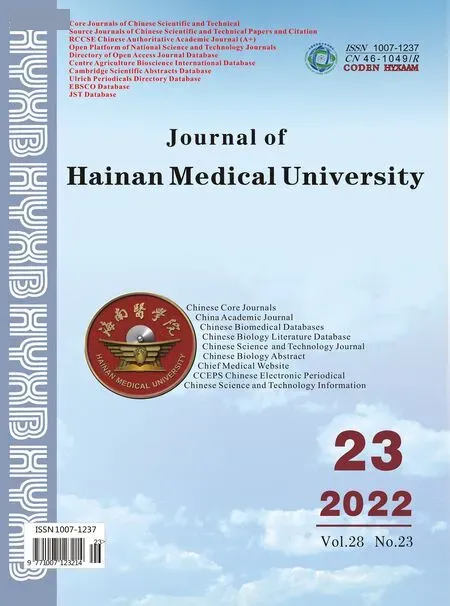 Journal of Hainan Medical College2022年23期
Journal of Hainan Medical College2022年23期
- Journal of Hainan Medical College的其它文章
- Research progress on pathogenesis of ulcerative colitis
- Advances in the application of optical coherence tomography in the assessment of ischemic stroke
- Meta-analysis of the clinical efficacy of Chinese herbal decoction combined with arthroscopy in the treatment of gouty arthritis
- Experimental study of TGF-β1/Smads pathway inhibition of macrophage polarization based on miR145-5P negative feedback regulation
- Exploring the key pathways of tetrandrine in the treatment of early silicosis based on bioinformatics and in vitro experiments
- Based on the theory of “Kidney-blood-bone” to explore the mechanism of GH/IGF-1 system in the prevention and treatment of osteoporosis in Qing 'e pill
